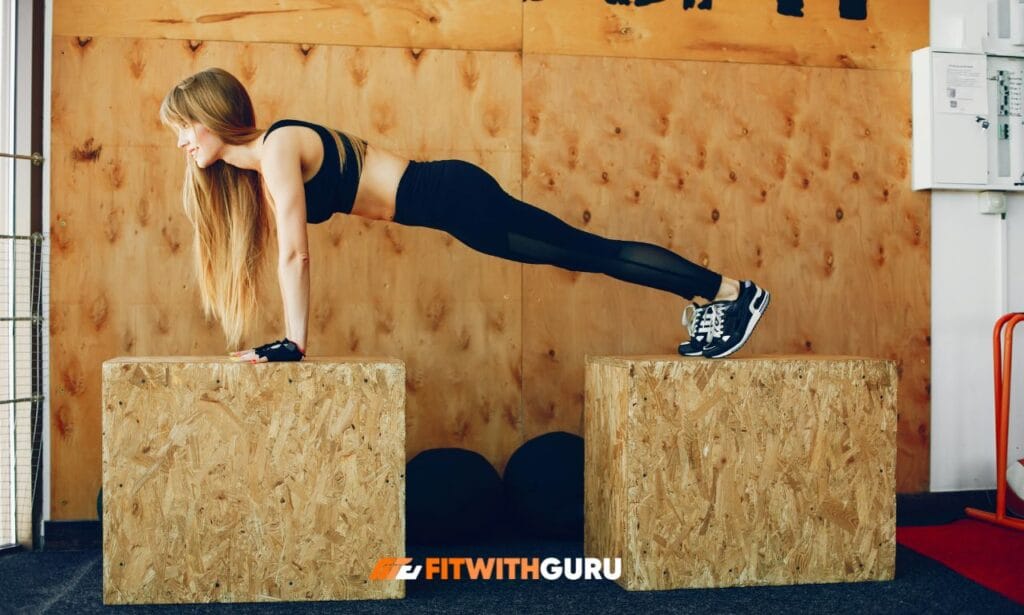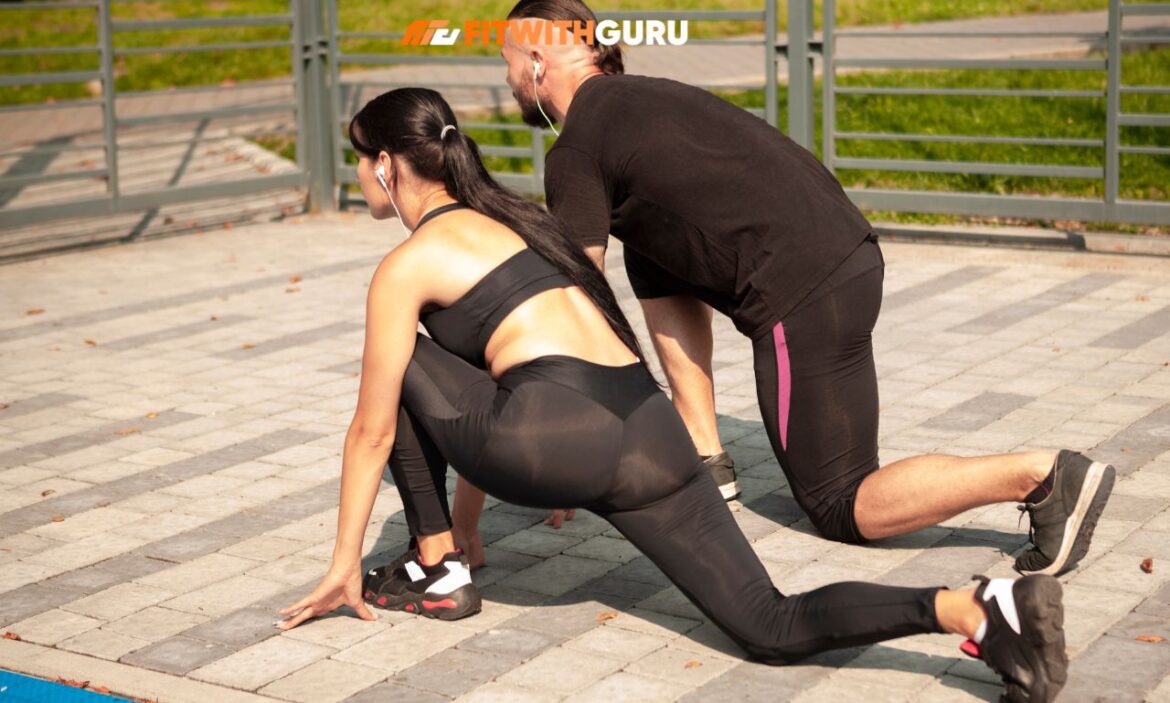Strength and core training for runners isn’t just an optional add-on to your running routine, it’s the secret weapon that separates good runners from great ones.
You’re at mile 20 of your marathon, and while other runners around you are hunching over with fatigue, you’re maintaining perfect form, your core solid as a rock, powering through to the finish line. This isn’t just a dream scenario; it’s what proper strength and core training for runners can deliver.
Why Strength and Core Training for Runners Changes Everything
Strength and core training for runners has significant scientific support. Your core acts as the central powerhouse, transferring energy from your upper body to your lower body with each stride.
Without adequate strength and core training for runners, this energy transfer becomes inefficient, like trying to fire a cannon from a canoe.
The Performance Benefits You Can’t Ignore
Strength and core training for runners delivers measurable improvements across multiple performance metrics. Elite runners like Eliud Kipchoge dedicate significant portions of their training to strength work, understanding that raw mileage alone isn’t enough to reach peak performance.
When your core is strong, your pelvis remains stable, preventing the energy leaks that occur when your torso wobbles side to side. This stability translates directly into faster times and better endurance.
Essential Lower Body Strength Training Movements for Runners
The foundation of effective strength and core training for runners starts with bulletproofing your lower body. These movements target the specific muscle groups that power your stride while addressing the common weak points that lead to injury.
Single-Leg Deadlifts: The Ultimate Running-Specific Exercise
Single-leg deadlifts are perhaps the most running-specific movement in strength and core training for runners. This exercise mimics the single-leg stance phase of running while challenging your posterior chain, the glutes, hamstrings, and calves that propel you forward.

How to perform single-leg deadlifts:
Stand on one leg with a slight bend in the knee
- Hinge at the hip while extending the opposite leg behind you
- Keep your back straight and core engaged throughout
- Reach toward the ground with your hands or light weights
- Drive through your heel to return to starting position
- Maintain balance by focusing on a fixed point ahead
- Start with 8-12 reps per leg, 2-3 sets
The beauty of single-leg deadlifts lies in their dual benefit: they strengthen your running muscles while simultaneously challenging your balance and core stability.
Bulgarian Split Squats: Unilateral Power Development
Running is essentially a series of single-leg bounds, making unilateral (one-sided) strength crucial for effective strength and core training for runners.
Bulgarian split squats target each leg independently, eliminating the compensation patterns that can develop when both legs work together.
How to perform Bulgarian split squats:
- Position your rear foot on a bench or step behind you
- Keep most of your weight on your front leg
- Lower into a lunge position by bending your front knee;
- lower yourself until your front thigh is parallel to the floor;
- Drive forcefully through your front heel to raise yourself back up;
- And maintain an upright posture and active core.
- Perform 2-3 sets of 10–15 repetitions per leg.
This movement builds the type of strength that translates directly to more powerful push-offs and better hill running ability.
Core Stability Exercises That Transform Running Performance
While traditional crunches have their place, effective strength and core training for runners requires exercises that challenge stability in multiple planes of movement. Your core needs to resist rotation, extension, and lateral flexion while maintaining optimal posture throughout your run.
Plank Variations: Building Anti-Extension Strength
The standard plank is just the beginning of comprehensive strength and core training for runners. Progress through side planks, plank with leg lifts, and dynamic planks to challenge your core from every angle.
Standard plank technique:
- Maintain a straight body alignment from your head
- Heels as you begin in the push-up posture with your forearms on the floor.
- Squeeze your glutes and contract your core.
- Breathe normally while holding the position
- Hold for 30-60 seconds, 2-3 sets
Side plank progression:
With your forearm supporting your upper body, lie on your side. Raise your hips off the floor and stack your feet. Draw a straight line between your head and your feet. Hold for two to three sets of 20 to 45 seconds on each side.
A strong anti-extension core prevents the lower back arch that develops as fatigue sets in during long runs. Remember, quality trumps quantity—a perfect 30-second plank beats a sloppy 2-minute hold every time.
Dead Bugs: Precision Core Control
Dead bugs might look simple, but they’re incredibly effective for developing the precise core control required in strength and core training for runners.
How to perform dead bugs:
Lie on your back with arms extended toward the ceiling
- Bend your knees at 90 degrees, shins parallel to floor
- Press your lower back firmly into the ground
- Slowly extend opposite arm and leg simultaneously
- Return to starting position with control
- Maintain lower back contact with floor throughout
- Complete 8-12 reps per side, 2-3 sets
This exercise teaches your core to stabilize your spine while your limbs move independently, exactly what happens when you run.
Upper Body Strength Training for Better Running Economy
Many runners overlook upper body work in their strength and core training for runners program, but this is a costly mistake. Your arms provide crucial counterbalance and rhythm to your stride, and a strong upper body maintains better posture as fatigue sets in.
Push-Up Variations for Functional Strength
Push-ups and their variations build the pushing strength that helps maintain good arm carriage throughout your run. Standard push-ups, incline push-ups, and single-arm push-ups all have their place in comprehensive strength and core training for runners.
Standard push-up technique:
- Start in plank position with hands slightly wider than shoulders
- Lower your chest toward the ground with control
- Keep your body in a straight line throughout
- Push back up to starting position
- Engage your core during the entire movement
- Complete 8-15 reps, 2-3 sets
Incline push-up modification:
- Place hands on an elevated surface (bench, step, wall)
- Follow the same form cues as standard push-ups
- Use for beginners or when fatigued
- Progress to lower surfaces as strength improves
This integration of upper body and core work makes push-ups particularly valuable for runners.
Pull-Ups and Rows: Balancing Your Physique
Running predominantly works the front of your body, so strength and core training for runners must include pulling movements to maintain muscle balance.
Pull-ups and rowing variations strengthen your lats, rhomboids, and rear deltoids, improving your posture and preventing the forward head position common in fatigued runners.
Assisted pull-up technique:
- Use resistance bands or an assisted pull-up machine
- Grip the bar with hands slightly wider than shoulders
- Start from a dead hang position
- Pull your chest toward the bar
- Lower with control to full arm extension
- Complete 5-10 reps, 2-3 sets
If you can’t perform pull-ups yet, use resistance bands or assisted pull-up machines to build up to full bodyweight versions.
Plyometric Training: Bridging Strength and Speed
Plyometric exercises represent the bridge between strength and running-specific power in comprehensive strength and core training for runners programs.
These explosive movements develop the reactive strength that allows you to spend minimal time in ground contact while maximizing force production.
Box Jumps and Depth Jumps
Box jumps teach your nervous system to rapidly recruit muscle fibers, while depth jumps develop the stretch-reflex that’s crucial for efficient running.

Box jump technique:
- Stand facing a sturdy box or platform (12-18 inches high)
- Swing your arms back and bend at hips and knees
- Jump explosively onto the box
- Land softly with bent knees
- Step down (don’t jump down) to preserve your joints
- Focus on soft landings over maximum height
- Complete 6-10 jumps, 2-3 sets
Depth jump progression:
Start on a low platform (8-12 inches) • Step off (don’t jump off) the platform • Land on both feet and immediately jump up • Focus on minimal ground contact time • Emphasize quick, reactive jumps • Complete 5-8 reps, 2-3 sets
The goal isn’t to jump as high as possible, but to develop the quick, efficient muscle contractions that will improve your running cadence and reduce injury risk.
Bounds and Hops
Single-leg bounds and alternating leg hops directly mimic the running motion while exaggerating the explosive component.
These exercises are particularly valuable for developing the strength-endurance that allows you to maintain power output throughout longer races.
Single-leg bound technique:
- Start in a running position on one leg
- Drive your knee up and forward explosively
- Extend your leg and land on the same foot
- Focus on distance rather than height
- Maintain good posture throughout
- Complete 8-12 bounds per leg, 2-3 sets
Alternating hop technique:
Begin in a slight forward lean • Hop from one foot to the other • Drive your knees up with each hop • Pump your arms in running motion • Pay attention to rapid ground contact. • Perform two to three sets of 20 to 30 total hops.
| Exercise | Sets | Reps | Focus |
| Single-leg bounds | 3 | 10 each leg | Distance and control |
| Alternating hops | 3 | 20 total | Quick ground contact |
| Box jumps | 3 | 8-10 | Soft landing |
Periodization: Timing Your Strength and Core Training for Runners
The most effective strength and core training programs for runners are periodized to complement your running schedule rather than compete with it.
During base-building phases, you can handle more volume and intensity in the gym. As you approach race season, strength work should become more maintenance-focused to avoid interfering with your running adaptations.
Base Phase: Building Your Foundation
During your base-building phase, dedicate 2-3 sessions per week to comprehensive strength and core training for runners. This is when you can push heavier weights and more challenging progressions since your running volume is moderate.
Focus on building maximum strength in movements like squats, deadlifts, and single-leg exercises. Your core work can include longer holds and more complex movements that challenge stability in multiple planes.
Peak Phase: Maintaining Strength While Racing
As you approach your goal race, strength and core training for runners should shift to maintenance mode. Reduce frequency to 1-2 sessions per week, focusing on movement quality and neuromuscular activation rather than strength gains.
This approach maintains the strength gains you’ve built while ensuring you’re fresh for your key running workouts.
Common Mistakes in Strength and Core Training for Runners
Even well-intentioned runners make mistakes that limit the effectiveness of their strength and core training for runners programs. By being aware of these traps, you can steer clear of them and increase the effectiveness of your training.
Mistake #1: Copying Bodybuilders Instead of Training for Running
The biggest mistake runners make is adopting bodybuilding-style programs instead of running-specific strength and core training for runners approaches. While bicep curls might look impressive, they do nothing to improve your running performance. Instead, focus on compound movements that train multiple muscle groups in patterns similar to running.
Mistake #2: Neglecting Single-Leg Training
Running is a single-leg sport, yet many runners spend most of their gym time doing bilateral (two-leg) exercises.
Adequate strength and core training for runners should emphasize unilateral movements that address imbalances between your legs. This approach not only improves performance but also significantly reduces injury risk.
Frequently Asked Questions
How often should runners do strength and core training?
Most runners benefit from 2-3 strength and core training sessions per week during base training periods. During peak racing season, reduce frequency to 1-2 sessions to maintain gains without compromising running performance. Frequency is less important than consistency; two weekly, high-quality sessions are preferable to intermittent, intense periods.
Should I do strength training before or after running?
For strength and core training for runners, timing depends on your priorities for that day. If strength is the focus, complete it before running when you’re fresh. For easy maintenance sessions, post-run strength work is fine and can serve as active recovery. Never do intense strength training before hard running workouts or races.
What weights should I use for strength and core training as a runner?
Start with bodyweight movements and progress gradually in your strength and core training for runners program. Most running-specific benefits come from moderate loads (60-80% of your maximum) performed with perfect form.
Heavy weights aren’t necessary—focus on movement quality, stability, and endurance rather than maximum strength.
Can strength training make me too bulky for running?
Properly designed strength and core training for runners won’t make you bulky. Running’s high energy demands and the type of strength training that benefits runners (moderate loads, higher reps, unilateral focus) promote lean, functional muscle development.
Elite distance runners are some of the strongest athletes pound-for-pound, not despite their running but because of their comprehensive training.
How long should strength and core training sessions last?
Adequate strength and core training for runners should last 30-45 minutes. This allows adequate time to warm up, complete compound movements with proper form, and include focused core work without creating excessive fatigue.
A concentrated 30-minute session outperforms a distracted 90-minute workout; quality and consistency are more important than duration.
Conclusion
Strength and core training for runners isn’t optional—it’s essential for anyone serious about improving their performance while staying injury-free. The evidence is clear: runners who incorporate systematic strength work run faster, longer, and with fewer injuries than those who only log miles.
By focusing on running-specific movements like single-leg deadlifts and Bulgarian split squats, building anti-extension core strength through planks and dead bugs, and including plyometric elements to develop power, you’ll transform not just how you feel during runs, but your race times as well.

